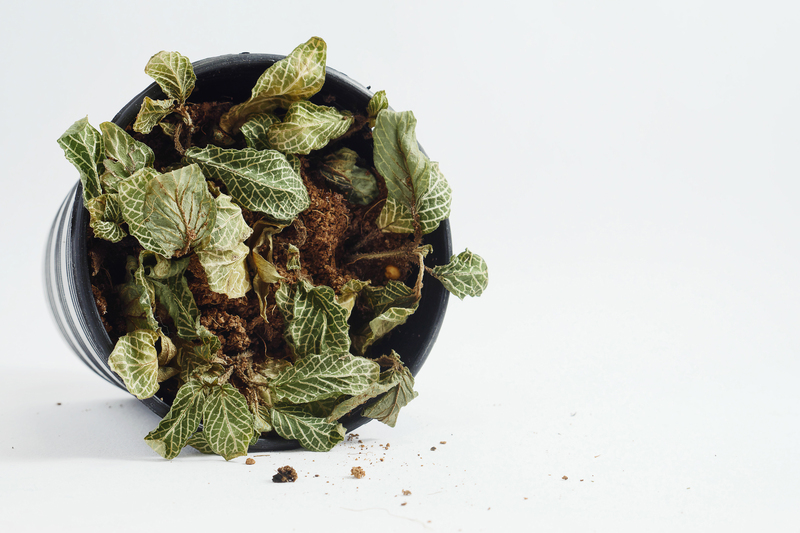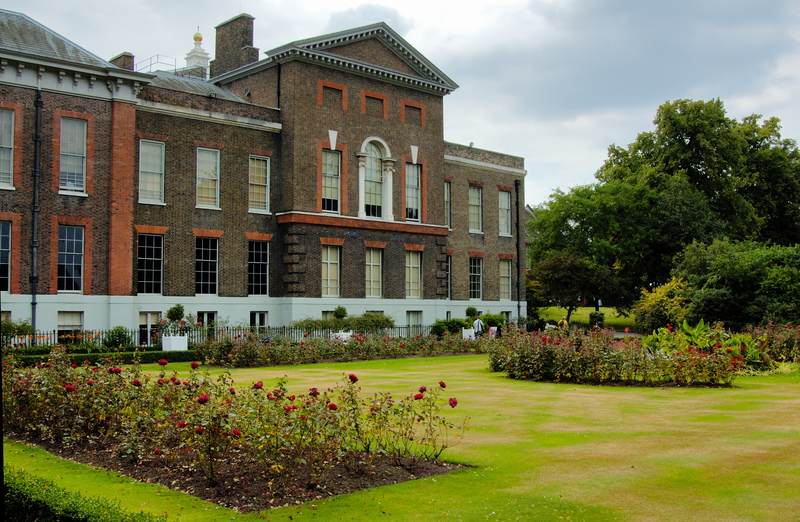The Secret to Show-Stopping Hedges Lies in Technique
Posted on 09/06/2025
The Secret to Show-Stopping Hedges Lies in Technique
If you've ever paused in front of a grand estate, enchanted by the pristine hedges framing the landscape, you've witnessed artistry at play. It's easy to assume that only professional gardeners can achieve such perfection, but the real secret is in the technique. Mastering the right techniques can transform even modest hedges into show-stopping garden features. In this comprehensive article, we'll unlock the principles and secrets that will help you cultivate truly impressive hedges.

Why Hedges Can Transform Any Garden
Before revealing the secrets to stunning hedge maintenance, it's important to understand why hedges have such a powerful impact on a garden's aesthetic and function:
- Structure: Hedges provide instant architectural interest, creating clean lines and defined spaces.
- Privacy: A thick hedge acts as a natural screen, adding intimacy to your outdoor space.
- Wildlife Habitat: Many birds and insects use shrubbery as shelter, promoting biodiversity in your landscape.
- Year-Round Beauty: Evergreen hedges, in particular, keep gardens looking lush throughout all seasons.
- Windbreak and Sound Barrier: A dense hedge can reduce wind and muffle traffic noise, making gardens more pleasant.
However, achieving these benefits demands skill.
The Importance of Technique in Hedge Care
Perfect hedges don't happen by accident. Consistency, timing, and the right approach are essential for hedge health and beauty. Let's delve into what sets show-stopping hedges apart from the ordinary.
The Foundation: Selecting the Right Plants
Choosing the best hedge plants is the first step toward success. Not every shrub is suitable for tight, formal shaping or dense, natural screening. Consider your climate, soil type, and the purpose of your hedge before purchasing. Popular options include:
- Boxwood (Buxus): Renowned for formal, compact hedges.
- Yew (Taxus): Excellent for both traditional and creative topiary shapes.
- Ligustrum (Privet): Fast-growing and adaptable for informal screens.
- Holly (Ilex): Offers year-round color and acts as a protective barrier.
- Laurel (Prunus laurocerasus): Lush, dense growth, great for privacy.
- Hornbeam and Beech: Ideal for deciduous hedges with a rustic look.
Match your plant choice to your maintenance capacity and garden aspirations.
The Art of Planting: Proper Spacing and Positioning
Many hedge problems begin with planting errors. For luxurious and healthy hedges, keep these technical tips in mind:
- Soil Preparation: Loosen the soil and enrich it with organic matter to encourage strong root growth.
- Spacing: Each variety has an ideal spacing distance. For tightly knit hedges, don't overcrowd--give roots room to expand.
- Alignment: Use a guide-string stretched between stakes to ensure perfectly straight rows.
- Initial Watering: Hydrate well after planting and maintain even moisture during establishment.
Investing time now ensures a lifetime of thriving beauty.
Maintenance Mastery: The Secret to Outstanding Hedges
Skillful Pruning and Trimming: The Core Technique
Impeccable hedges owe their form to precise, regular pruning. Mastering the right technique will help your hedges grow dense, healthy, and symmetrical. Here's how:
- Timely Trimming: For most species, trim twice yearly: first in spring after the initial growth, then again in late summer.
- Sharp Tools: Always use sharp, clean shears or electric trimmers for smooth, clean cuts.
- Shape Matters: Taper the sides slightly inward toward the top. This allows sunlight to reach the lower branches, preventing bare patches.
- Light Pruning for Establishment: For new hedges, trim lightly to encourage bushiness and strong root systems.
- Remove Dead or Diseased Branches: Regularly inspect for issues and prune them out promptly.
- Use a Level: For show-stopping straight edges, use a string guide and level for reference while trimming.
Fun Fact: The classic "A-line" shape--where the base is wider than the top--is the secret behind perfectly dense, green hedges. Sunlight evenly reaches all sides, stimulating even growth and lushness. Never shear vertically!
Feeding and Watering: The Life Force Behind Stunning Hedges
Well-fed and watered hedges display vibrant foliage and robust growth. Consider these essential practices:
- Consistent Watering: Especially critical during the first 2-3 years after planting and in periods of drought.
- Mulching: Apply a layer of organic mulch beneath the hedge to retain moisture and suppress weeds.
- Fertilizing: Feed your hedge each spring with a slow-release, balanced fertiliser to support healthy growth.
- Avoid Overfeeding: Too much nitrogen can promote rapid but weak growth prone to pests.
Pest and Disease Control: Keeping Hedges Healthy
Show-stopping hedges are healthy hedges. Regular inspections reveal problems before they become major threats. Here's how to secure your garden's most striking feature:
- Watch for Discoloration or Wilting: These early warning signs point toward fungal infections or root disorders.
- Spot Pests Early: Aphids, spider mites, and scale insects can all target hedge plants. Physical removal or organic treatments are often effective.
- Encourage Natural Predators: Birds and beneficial insects like ladybirds are nature's pest controllers. A balanced ecosystem makes hedge care easier.
- Remove Infected Material: Quickly dispose of diseased branches to prevent spread.
Advanced Techniques for Extraordinary Hedges
The "Chelsea Chop" and Selective Pruning
Some advanced gardeners use the so-called "Chelsea Chop"--a strategic pruning in late May--to promote denser and more compact growth. Selectively shorten stems on some shrubs to encourage bushier development and late-season blooms. This careful timing and methodical approach can truly set your hedge apart.
Topiary and Creative Forms
If you crave artistry in your hedging, topiary is the ultimate expression. Using evergreens like yew or box, you can shape hedges into rounded domes, spirals, or even animal silhouettes. The secret is patient, incremental trimming and careful shaping, always using guides or templates for consistency.
Renovating Old or Neglected Hedges
Do you have a tired, overgrown hedge? Don't despair--many species (especially privet and yew) respond well to rejuvenation pruning. Cut back hard in early spring, removing up to one-third of the oldest branches. With care, you'll see vibrant new shoots by summer and a renewed, flourishing hedge within a couple of years.
Common Mistakes in Hedge Maintenance
Over-Trimming or Under-Trimming
Hedges that are trimmed too aggressively, or neglected entirely, both suffer. Over-trimming stresses the plant and exposes bare stems, while lack of trimming promotes leggy, uneven growth. Regular, moderate care is key!
Poor Cutting Tools
Dull blades cause ragged cuts, increasing vulnerability to infection. Invest in high-quality, well-maintained tools for the best results.
Ignoring the Base
People often focus trimming at the top, forgetting the base. Keep the lower branches healthy by shaping your hedge wider at the bottom and paying attention to sun exposure.
Eco-Friendly Hedge Care: Sustainable Beauty
Show-stopping hedges can also be eco-conscious. Here's how:
- Choose native plants where possible--they're more resistant to local pests, diseases, and weather extremes.
- Compost trimmings rather than sending to landfill.
- Use organic mulches and treatments to foster soil and insect health.
- Water hedges in the morning or evening to reduce evaporation and conserve resources.
Frequently Asked Questions About Hedge Techniques
How often should I trim my hedge for best results?
Most hedges benefit from trimming at least twice yearly. Fast-growing species may need more frequent attention (every 6-8 weeks in the growing season), while slower growers can be pruned annually or biannually.
When is the best time for hedge planting?
Early autumn or spring--when the soil is moist but not frozen and temperatures are moderate--is the best window for planting new hedges.
Can I recover an old, woody hedge?
Yes! Most hedges can be revitalized through staged, hard pruning and care, though some species respond better than others. Patience and regular maintenance are vital.
What's the easiest hedge for beginners?
Boxwood and privet are both forgiving and easily shaped--perfect for novices.
Hedge Design Inspiration for Every Landscape
If you're considering adding a statement hedge to your space, draw inspiration from classic and modern styles:
- Formal Georgian lines: Crisp, low box hedges outline garden beds and walkways.
- Wildlife hedges: Mix native shrubs for a softer, more natural look that supports biodiversity.
- Vertical interest: Plant tall, narrow hedges--like hornbeam or beech--for privacy screens.
- Layered planting: Combine hedges in tiers for depth and year-round color.
- Creative topiary: Sculpt whimsical shapes to add personality and fun.

The Ultimate Secret: Consistency and Care
The greatest secret to show-stopping hedges isn't hidden at all--it's a blend of knowledge, patience, and consistent technique. When each cut is made with purpose, and you nurture your hedge with care, your landscape will reward you with lush, vibrant, and utterly captivating living walls. Whether you seek formality or free-flowing natural beauty, the right approach unlocks the full potential of your garden's green backbone.
Conclusion: The Path to Standout Hedges Starts Today
Transforming your garden hedge from average to awe-inspiring is well within reach. Start by selecting the right plants, master the techniques described above, and commit to regular, thoughtful maintenance. With a skilled hand and a watchful eye, your hedges will become the stunning framework that elevates your entire landscape.
Remember: The secret to show-stopping hedges truly lies in technique--and the effort and artistry you bring to it.

